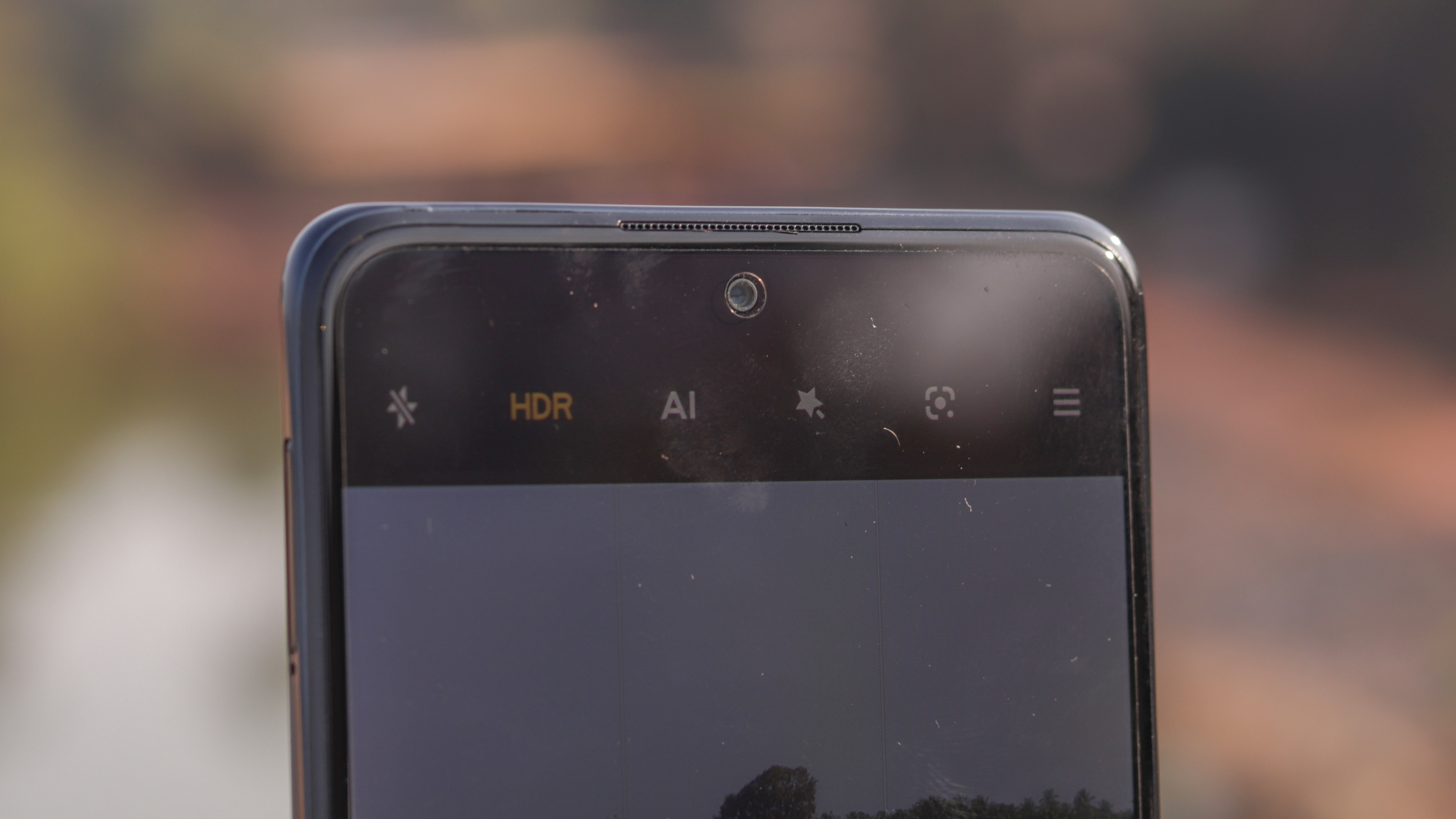TechRadar Verdict
Calling the Redmi Note 10 Pro Max an upgrade would be an understatement. It brings competitive features such as an AMOLED display with a high refresh rate, a 108MP quad-camera stack, great battery life and more, in a package that is literally and figuratively easy on the pocket, making it our new best phone under Rs 20,000 in India.
Pros
- +
Lovely 120Hz AMOLED display
- +
Reliable battery life
- +
Great cameras
- +
Stereo speakers
Cons
- -
Relatively slow charging
- -
Inconsistent secondary camera
- -
No 5G
Why you can trust TechRadar
Two-minute review
If you were to ask a learned consumer to create a practical wishlist of specs of their dream budget smartphone under Rs 20,000 a few months ago, the expectations would include a high refresh rate display, multiple high-resolution cameras, a large battery with fast charging and a design that is unique and premium.
While those would’ve seemed far fetched in 2020, they are rather mainstream in early 2021. This is largely due to devices such as the Redmi Note 10 Pro Max, which not only go above and beyond the set expectations, but also redefine the segment with new components that were unheard of earlier.
The Redmi Note needs little introduction. It is one of the most-sold smartphone series globally and in India, with the tally counter at over 20 crore units. While last year was a little drab for the family, the Redmi Note 10 Pro Max aims to bring glory back to the family with upgrades across the board.
A quick glance at the spec sheet will quickly reveal that this phone aims to make a statement in the budget segment — a high refresh rate AMOLED display, a high megapixel camera array, a large battery, a capable processor and more.
Impressively, most of them so translate to a great user experience. For example, the display is definitely amongst the best in this segment, offering a legit AMOLED colour experience, adequate levels of brightness and am enjoyable refresh rate.
Similarly, the quad-camera stack of the Redmi Note 10 Pro Max includes an excellent 108MP primary sensor, an incredible macro shooter along with the usual slew of ultra-wide and depth cameras. Even on the software front, these cameras are filled to the brim with features and shooting modes.
While the phone lacks 5G capabilities, the chipset performs reasonably well for most day to day tasks. Sure, it will break a sweat during heavy gaming, but it’s far from a terrible experience. It’s also well-tuned to be efficient, giving the phone excellent battery life that will easily last you through the day.
In a nutshell, we have very little to complain about with the Redmi Note 10 Pro Max. And looking at the asking price for the said features, it is currently our top recommendation for the best budget phones you can right now.
Redmi Note 10 Pro Max price in India
Check out the Redmi Note 10 Pro Max
Available on Amazon.in, starting March 18
6GB + 64GB: Rs 18,999 | 6GB + 128GB: Rs 19,999 | 8GB + 128GB: Rs 21,999
Launched in India on March 4, the Redmi Note 10 Pro Max is available in three variants. The 6GB + 64GB variant is priced at Rs 18,999, the 6GB + 128GB is priced at Rs 19,999 and the top 8GB + 128GB variant is priced at Rs 21,999. Colour options include Vintage Bronze, Glacial Blue and Dark Night.
It is now available on Amazon.in, where ICICI Bank credit cardholders will be eligible for a Rs 1,500 discount.
If you're looking for something a little cheaper, consider checking out the Redmi Note 10 Pro, which offers the exact same package but with a 64MP primary camera, at Rs 3,000 lower across the board.
Check out our best phones under Rs 25,000 in India compilation to know more about the alternatives.
Design


The Redmi Note 10 Pro Max adopts a new Evol design language from Xiaomi. It’s supposed to make the phone a lot more seamless and ergonomic, and that does seem to hold true. The entire black has a subtle curve from one side to the other, while the weight has been equally distributed vertically, making the phone a lot more comfortable to hold. It’s also a lot lighter than its predecessor, which was a common complaint last year.
Our Dark Night variant has a glossy grey finish, but the other colourways have a matte finish. It’s also good to see a proper glass back instead of a polycarbonate solution, adding a nice hint of class.
The focus is clearly on the cameras, where the primary sensor has been highlighted to reveal its size, followed by its three sidekicks. The entire module is a little raised, which not only makes it prone to rocking on a table, but also collects dirt very easily.


We love the fact that the phone is much slimmer and lighter than its predecessor.
More substantive basics are on point too. The Redmi Note 10 Pro isn’t too thick at 8.1mm, and its sub-200g weight (193g) is not distractingly high. You’d guess it cost a lot more... Unless you’re a phone aficionado who knows quite how aggressively-priced phones from brands like Redmi and Realme are. Even the haptic feedback and vibration motor are a lot stronger.
The only giveaway that it is a budget phone is the plastic chassis holding everything together. The right side houses the volume rocker and a large power button with an active fingerprint scanner embedded in it. It works well, and was always fast and accurate, so we don’t mind the choice of skipping an under-display sensor. On the top is an IR blaster which comes in handy as a remote control.
The Redmi Note 10 Pro Max has one of the best speaker solutions in the budget segment, with a dual driver setup with a primary loudspeaker on the bottom and a secondary grille on the top for a proper stereo effect. While not the loudest, they are adequate, clear and offer good bass.
Display


Another feather in its crown is the inclusion of a high refresh rate AMOLED screen, making the Redmi Note 10 Pro Max the cheapest phone to offer that by a mile. More importantly, those aren’t just namesake specs with a substandard display and inconsistent smoothness. The 6.67-inch panel a large canvas with great vibrancy, sharpness and contrast. The black levels are perfect too.
The peak brightness levels are also top-notch, being legible in nearly every scenario. However, sometimes, at the highest brightness, the phone does struggle to maintain the extreme contrast ratio and lets the blacks become greys. This wasn’t always the case but deserved a mention.


The next phone with a 120Hz AMOLED display costs almost Rs 30,000.
Along with support for HDR10, the display’s colour can also be customized as per your liking, ranging from very natural tones to richer more saturated hues. The colour temperature can also be set.
The choice of offering a 120Hz refresh rate puts the phone in a class of its own, offering a level of smoothness that few phones in this segment can boast of. It does drop frames occasionally, but that was more of an exception than the norm.
The punch-hole notch on the top was fairly small too, easily disappearing once content would be played. The bezels around the display are fine, but we did face some ghost touches along the sides.
The Redmi Note 10 Pro Max has a stellar screen considering its low cost.
Performance



The Snapdragon 732G is a chipset that has been exclusive to the Xiaomi group till now, previously seen on the Poco X3. It is the top mid-range 4G processor from Qualcomm right now, built on the 8nm process.
While the Redmi Note 10 Pro Max is not the most powerful chipset in this segment, it is more than sufficient for all day-to-day tasks and multi-tasking. It’s only during heavy multi-tasking that you’ll notice its shortcomings, but even that wasn’t too bad. Lighter games such as Pokemon Go will run at more than 60fps with ease.
One issue that we faced was that the RAM management was a little erratic. Some apps would stay in memory for hours whereas others such as Facebook would refresh even just minutes later. We think this is an optimization problem, so a software update could fix it.
A common query was around the decision to not offer a 5G package. Redmi executives explained that it would add a fair bit of cost to the device, which is clearly trying to be a price leader. Moreover, such budget phones have a life of about 2-3 years, by when 5G is not expected to be mainstream in India.
The phone does not skimp out on the storage or RAM either, offering the faster UFS 2.2 and LPDDR4X varieties respectively. There’s also expandable storage. Wi-Fi performance and cellular reception were great, too.
Software

Out-of-the-box, the Redmi Note 10 Pro Max runs on MIUI 12 based on Android 11. The frequency of system ads has been greatly reduced (seen only during installing new apps), and even stray notifications were rare and easy to disable. The content has also been moderated to not show inappropriate visuals.
Moreover, the company announced that the upcoming MIUI 12.5 update will make matters better and also make most of the additional apps uninstallable, for a much cleaner experience.
Otherwise, the phone takes the right steps with its approach to the software skin. While it’s not light or close to stock by any means, the rich customization possibilities do help in making the phone simpler and personalized without a lot of effort. Even the leftmost homescreen has been natively set to Google Discover.
Battery

With so many upgrades, we expected the phone to take a hit in the battery department. We’re glad to report that wasn’t the case here. The Redmi Note 10 Pro Max always offered reliable battery life that would easily last through an entire day. At 120Hz, we would consistently get over 6 hours of screen-on time with moderate usage, which was great. Switching to 60Hz made matters a little better. If you’re an average user, the phone will easily last you till the night and then some. It was one of those few devices that we could confidently step out with even on lower levels.
The included charger supports 33W fast charging, which takes a little over an hour to go from 0 to full, which isn’t bad considering the 5,020mAh battery size. Yes, there are faster options available from Realme, but this phone offers a good balance between good battery life and fast charging.
Camera



The Redmi Note 10 Pro Max has a quad-camera array, with a 108MP primary sensor, an 8MP ultra-wide lens, a 5MP macro shooter and a depth sensor, along with a 16MP selfie camera.
Before you get too excited, it’s important to note that the 108MP Samsung ISOCELL HM2 is a high-resolution sensor, but not necessarily a high-end one. It is meant for budget phones. It uses 9-in-1 pixel binning to produce 12MP shots by default with a larger 2.1µm. Notably, the phone does not struggle even with this heavy sensor, and produces images in a jiffy. The results have plenty of detail and great colours, albeit a little too saturated for our liking. The dynamic range could also have been better, especially in trickier conditions.










Details are somewhat retained even at the 2x digital zoom crop, but anything beyond is a stretch. The night mode is also serviceable, and gets some good details out from the shadows, but it doesn’t change things by that much. We prefer our night shots to look like the night, so that wasn’t an issue. Be careful about the slower shutter and excessive noise reduction though.
The ultra-wide lens was average, struggling to match the colours, dynamic range and temperature.









Video stabilization is available only at 1080p 30fps
In a surprise turn of events, it was the macro sensor that was the most enjoyable. In a sea of redundant 2MP macro cameras, the Redmi Note 10 Pro Max offers a 5MP unit with 2x magnification. This means that you can actually get pretty close to a subject and isolate the intricacies. The sensor has a decent plane of focus, along with good light sensitivity and a beautiful focus roll-off. It is perhaps the best macro camera we’ve ever tested.
Power users will appreciate the fully manual Pro mode that can be used for photos as well as videos, and for the ultra-wide lens as well! Moreover, the default gallery app also has a comprehensive photo editing suite built-in. Shutterbugs will enjoy features such as AI sky replacement and clones, which normally take hours of editing.
Capable hardware and a bevvy of features make the Redmi Note 10 Pro Max a very enjoyable camera to use, even if it might not be the best.
Verdict

Buy if...
You're looking for a budget all-rounder
The Redmi Note 10 Pro Max aces all the basics, with a great display, reliable battery life, enjoyable cameras and decent performance, leaving little room for improvement.
Content consumption or gaming are important
The large AMOLED display with 120Hz refresh rate, dual stereo speakers, a capable headphone jack and consistent performance make the phone ideal for watching videos or playing games.
You want reliable battery life
The Redmi Note 10 Pro Max, with its large 5,020mAh battery will easily last you through the day. When needed, the 33W charger rises to the occassion and keeps things running.




Don't buy if...
You're on a tight budget
If you like the Redmi Note 10 Pro Max but it's a little out of your budget, consider the Redmi Note 10 Pro — it is the exact same device, but with a 64MP primary camera, but Rs 3,000 cheaper.
You need faster charging
The large battery combined with modest charging speeds means the Redmi Note 10 Pro Max takes over an hour to go to charge. If that's not fast enough for you, consider the latest from Realme, which take just about half the time!
5G is important to you
While mass-market 5G in India is a few years away and likely to be expensive in the beginning, it is slowly becoming a wanted feature. If you fall into that category, check out the Realme X7 or the Xiaomi Mi 10i.
Aakash is the engine that keeps TechRadar India running, using his experience and ideas to help consumers get to the right products via reviews, buying guides and explainers. Apart from phones, computers and cameras, he is obsessed with electric vehicles.



